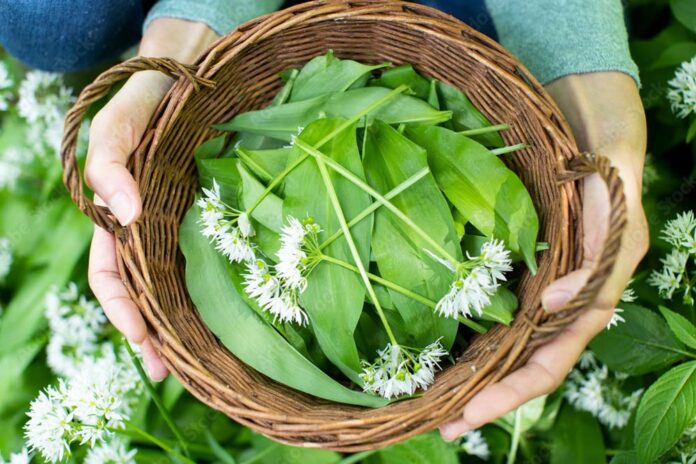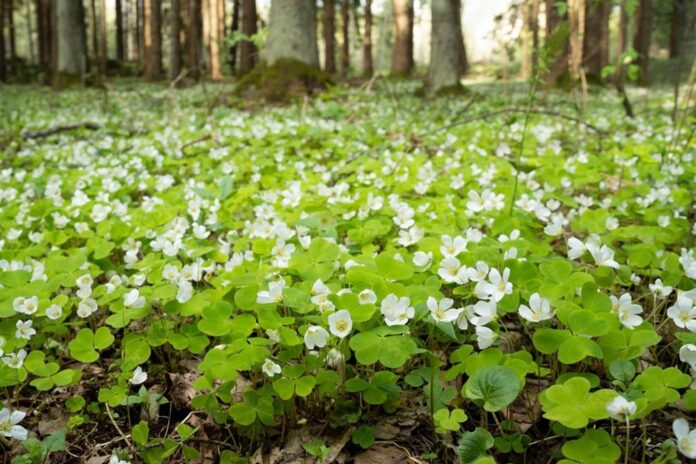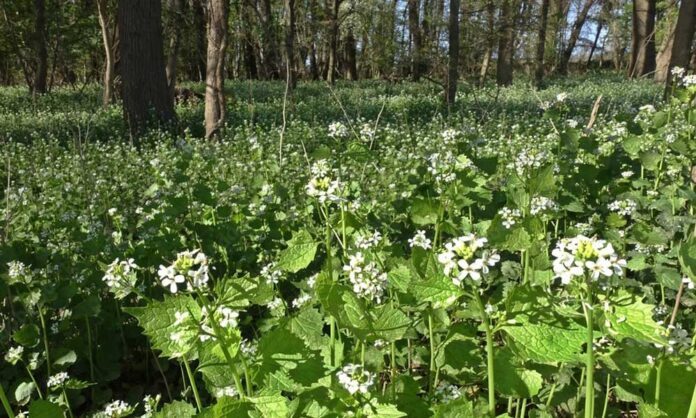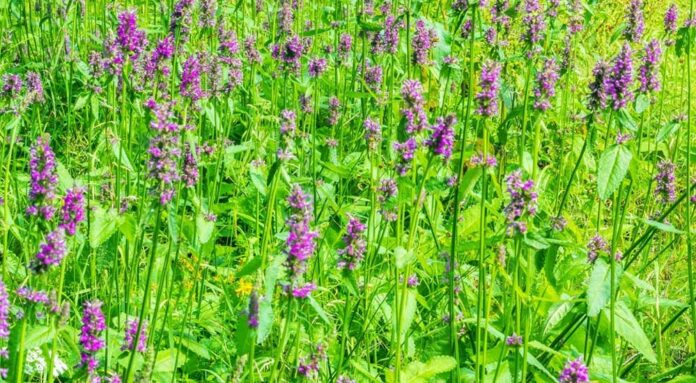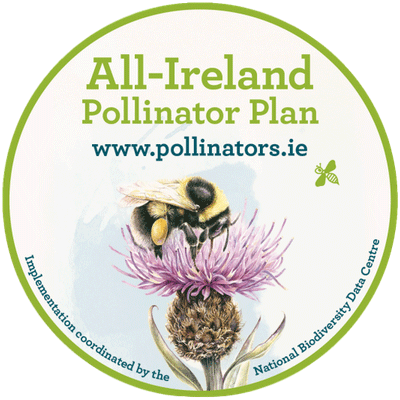Venture out from the manicured gardens of Marblehill Houses and into the wild embrace of the surrounding townland. There, amidst the hedgerows and bordering woodlands, you might encounter a shrub adorned with both thorns and delicate blossoms – the hawthorn (Crataegus monogyna) and the Irish name Sceach gheal. Steeped in folklore and symbolism, the hawthorn offers a glimpse into the natural world’s beauty and a reminder of its ancient connection to human history.
Thorns and Beauty: Identifying the Hawthorn
The hawthorn is a captivating sight throughout the seasons. In spring, its branches erupt in a profusion of white flowers, each with five delicate petals. The blossoms boast a hint of green or yellow at their base, adding to their unique charm. As summer progresses, the flowers give way to clusters of tiny green berries, which gradually ripen to a vibrant red in fall. But beware – the hawthorn’s beauty is not without its defences. Its branches are armed with sharp thorns, a reminder of the plant’s resilience and its ability to protect itself.
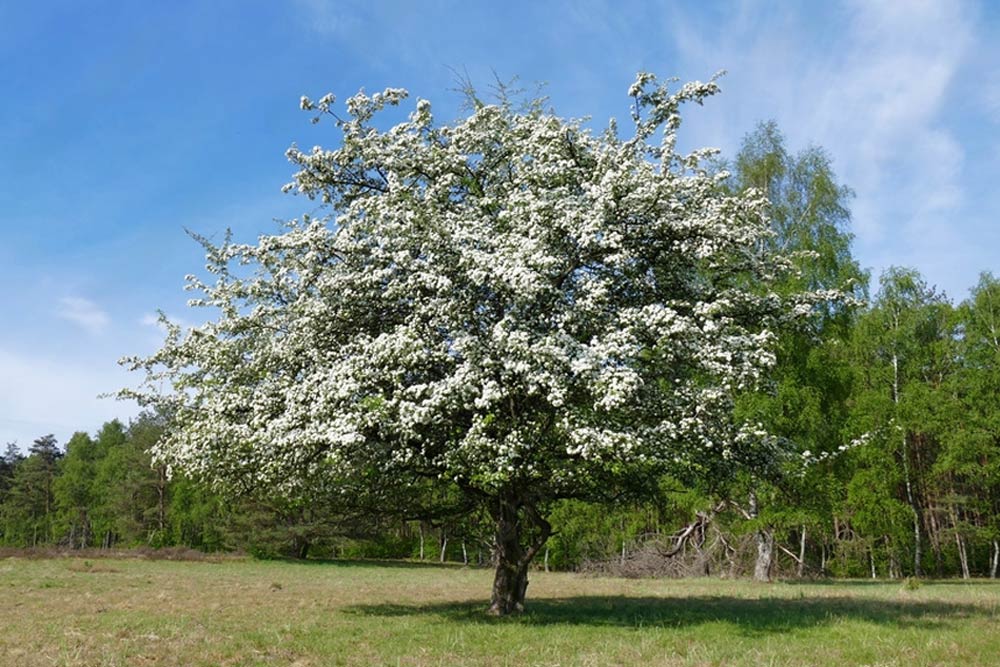
Identifying the Hawthorn: A Guide to this Enchanting Tree
While the hawthorn’s magic may lie in its folklore, its beauty lies in its physical form. Here are some key features to help you identify this enchanting tree:
- Leaves: Look for lobed leaves with 3-7 pointed or toothed segments. The leaf edges are typically serrated, and the underside is a lighter green than the top.
- Flowers: In spring, the hawthorn bursts forth with clusters of small, white flowers with five petals. The centre of the flower displays red or pink stamens, adding a touch of colour.
- Fruits: As summer progresses, the white flowers give way to clusters of bright red berries (haws). These berries are typically round and contain a single seed.
- Bark and Thorns: The hawthorn’s bark is generally brown-grey and can become cracked and fissured with age. One of the most distinctive features is the presence of sharp thorns on the branches, a characteristic that may have contributed to its association with fairies and protection in folklore.
- Habitat: Hawthorns are quite adaptable and can be found in woodlands, hedgerows, scrubland, and even on rocky outcrops.
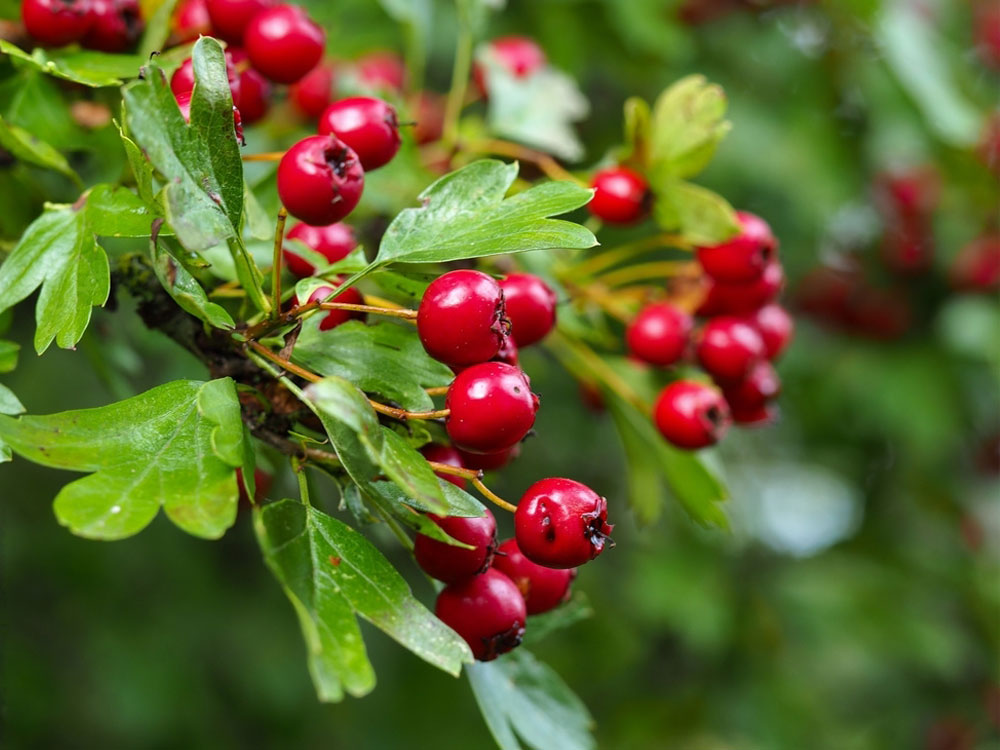
A Symbol of Hope and Protection: Folklore and Legends
Hawthorn leaves and flowers have been imbued with symbolic meaning for centuries. In Celtic cultures, the hawthorn, otherwise known in Ireland as Whitethorn was considered a sacred tree, associated with fairies and the spirit world. May Bush, or Fairy Tree. Its springtime blossoms were seen as a symbol of hope and renewal, while its sharp thorns offered protection from evil spirits. Legends abound of hawthorn trees marking ancient boundaries or standing guard over sacred places. Even the name “hawthorn” is thought to derive from the Old English “hagthorn,” meaning “hedge thorn,” a reference to its use in creating protective hedgerows.
The Enchantment of the Whitethorn. Myths and Legends of the Hawthorn Tree
Deep within the Irish embrace of Irish folklore lies the whitethorn, a tree woven into the fabric of myth and legend. More than just a hawthorn, it’s a portal to a world unseen, a sanctuary for fairies, and a symbol imbued with potent magic.
In the Irish tradition, the whitethorn is revered as a sacred tree. Its delicate blossoms and thorny branches are said to hold a special power, often associated with the fair folk, spirits, and mystical creatures. Disturbing or cutting down a whitethorn is believed to be a grave transgression, inviting misfortune or even the wrath of the fairies themselves.
A solitary whitethorn, standing sentinel in the heart of a field, takes on an even more profound significance. It becomes a gateway, a shimmering passage to the hidden realm of the fairies. For those who dare to approach, a word of caution: tread carefully, for the rules of the human world may not hold sway in this enchanted domain.
The whitethorn’s mystique extends beyond the realm of fairies. Its springtime blooms, a cascade of white against the verdant backdrop, are said to possess potent magic. In some tales, they represent purity and new beginnings, while in others, they hold the power to ward off evil or grant wishes.
The enduring presence of the whitethorn in Irish folklore speaks to the deep connection the Irish people have with the natural world. It’s a reminder that even the most ordinary things can hold extraordinary magic, waiting to be discovered by those who believe.
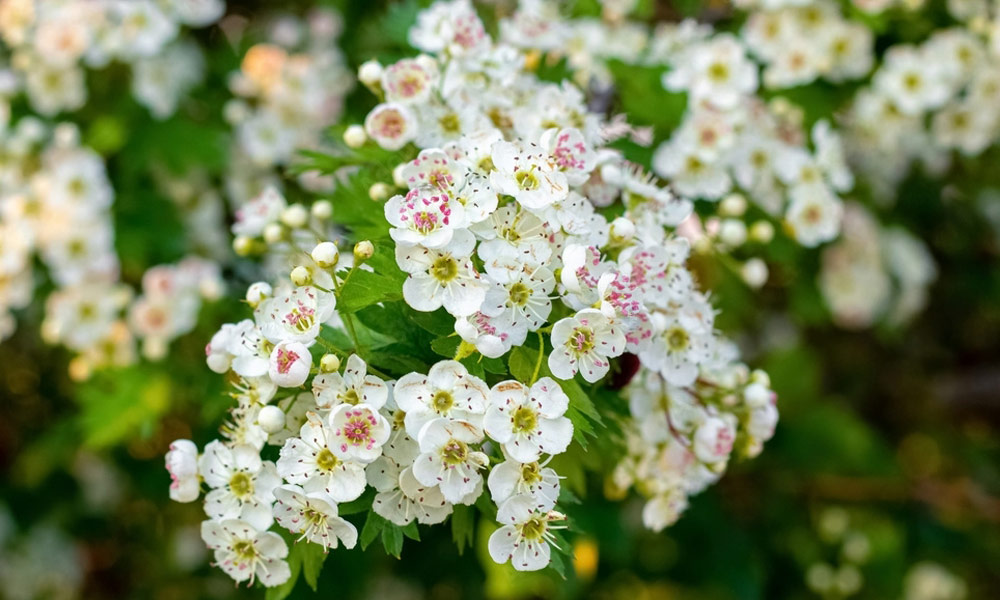
A Haven for Wildlife: Hawthorn’s Role in the Ecosystem
The hawthorn is a vital part of the Marblehill townland ecosystem. Its dense, thorny branches provide a safe haven for nesting birds, such as robins, wrens, and blackbirds. The intricate network of branches and twigs creates a protective maze where fledglings can learn to fly and take shelter from predators. Hawthorn berries offer a valuable food source for many creatures, from thrushes and fieldfares to foxes and badgers. In late summer and fall, the hedgerows thrum with activity as birds and mammals feast on the bounty of the hawthorn. The hawthorn’s flowers also attract a multitude of pollinators, including bees and butterflies. These tiny creatures flit from blossom to blossom, collecting pollen and ensuring the continued health and productivity of the surrounding plant life. From providing homes for birds to nourishing wildlife and aiding in plant reproduction, the hawthorn plays a critical role in the intricate web of life at Marblehill.
Beyond Folklore: Exploring Culinary and Medicinal Uses
While the hawthorn’s medicinal properties are not universally recognized by modern medicine, its flowers and berries have been used in traditional herbal remedies for centuries. Hawthorn tea, made from dried flowers and leaves, is said to support heart health, although scientific evidence is limited. It’s important to consult with a qualified herbalist before using hawthorn for medicinal purposes, as it can interact with certain medications.
The ripe hawthorn berries, however, offer a delightful culinary opportunity. With a flavour that is both tart and slightly sweet, they can be transformed into jams, jellies, and even wines. Foraging for ripe hawthorn berries can be a rewarding experience, but caution is advised. Only consume fully ripe berries – unripe berries can cause stomach upset. When gathering berries, be mindful of your surroundings and avoid picking from areas that may have been sprayed with pesticides.
Unveiling the Hawthorn’s Culinary Delights
The hawthorn tree, beyond its mythical significance in Ireland, offers a surprising range of culinary uses. Its tart berries and fragrant flowers can be transformed into delicious treats and beverages. Here’s a glimpse into the world of hawthorn recipes:
- Hawthorn Tea: This is a simple yet delightful way to experience the hawthorn’s flavour. Steep a teaspoon of dried hawthorn berries in hot water for 10-15 minutes. Strain and enjoy the naturally sweet and slightly tart tea, known for its potential health benefits.
- Hawthorn Cordial: For a more refreshing twist, try a hawthorn cordial. Combine simmered hawthorn berries with sugar, water, and spices like cinnamon or ginger. Strain the mixture and dilute it with water or sparkling water for a delightful summer drink.
- Hawthorn Jam: Capture the essence of autumn in a jar of homemade hawthorn jam. The berries’ natural pectin content helps create a delicious spread, perfect for toast or scones. Combine the berries with sugar and lemon juice, cook until thickened, and enjoy the unique flavour.
- Hawthorn Vinegar: Hawthorn berries can be infused with vinegar for a tangy and flavorful condiment. This vinegar adds a touch of magic to salads, dressings, or even marinades. Simply pack a jar with berries, cover with vinegar, and let it infuse for several weeks.
- Hawthorn in Savory Dishes: While less common, hawthorn berries can also add a unique touch to savoury dishes. Consider using them in sauces or stews for a hint of tartness and complexity. Explore recipes online to discover innovative ways to incorporate hawthorn into your culinary creations.
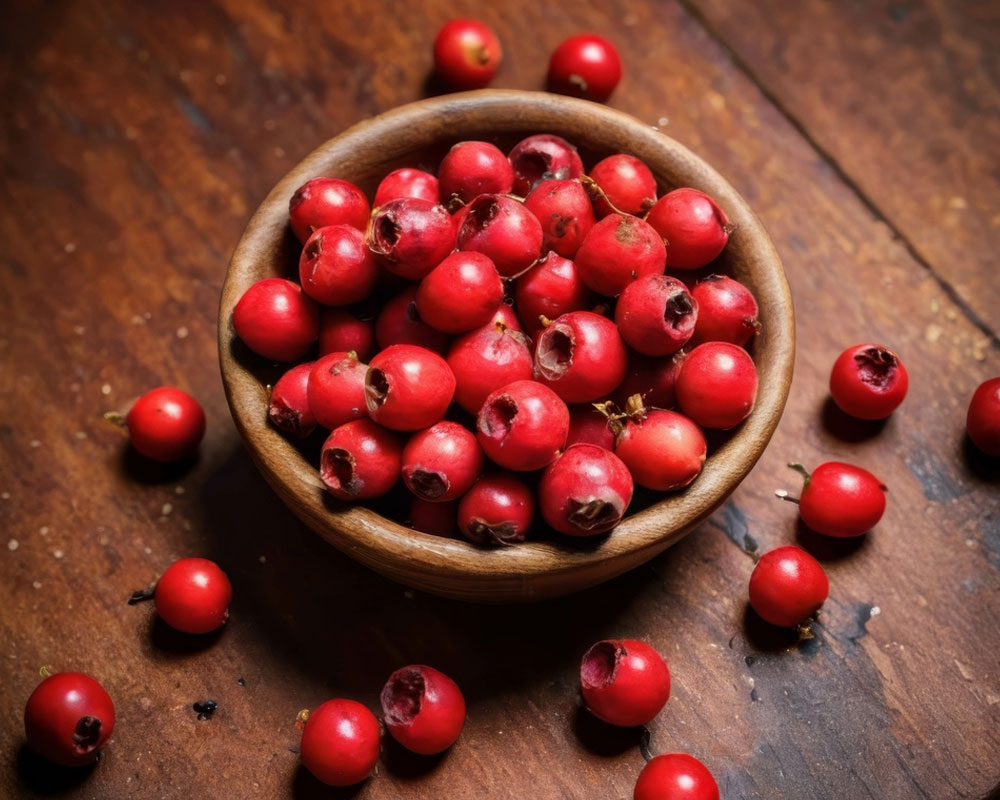
A Note of Caution: Before consuming hawthorn in any form, it’s important to consult with a herbalist professional, especially if you are taking any medications.
With a little creativity, the humble hawthorn berry can be transformed into a delightful addition to your kitchen repertoire. So, the next time you encounter this magical tree, consider not just its folklore, but also its potential to tantalize your taste buds.
Sustainable Practices: Protecting the Hawthorn at Marblehill
The hawthorn trees at Marblehill are a living testament to the townland’s history and a vital part of its ecosystem. If you encounter a hawthorn tree during your explorations, remember to respect it. Avoid picking excessive flowers or berries, and take care not to damage the branches. Hawthorn trees are slow-growing and can take many years to mature. By being a responsible visitor, you can help ensure that the hawthorn continues to thrive for generations to come.
A Legacy of Beauty and Symbolism: The Enduring Presence of Hawthorn
The hawthorn tree at Marblehill townland is more than just a plant. It’s a symbol of hope, protection, and the enduring connection between nature and humanity. Its springtime blossoms offer a promise of new beginnings, while its autumn berries nourish the creatures of the hedgerow. The hawthorn’s presence whispers tales of folklore and legend, reminding us of the rich tapestry of stories woven into the natural world. So, the next time you explore the hedgerows of Marblehill, keep an eye out for the hawthorn. With its crown of thorns and delicate blossoms, it stands as a silent sentinel


